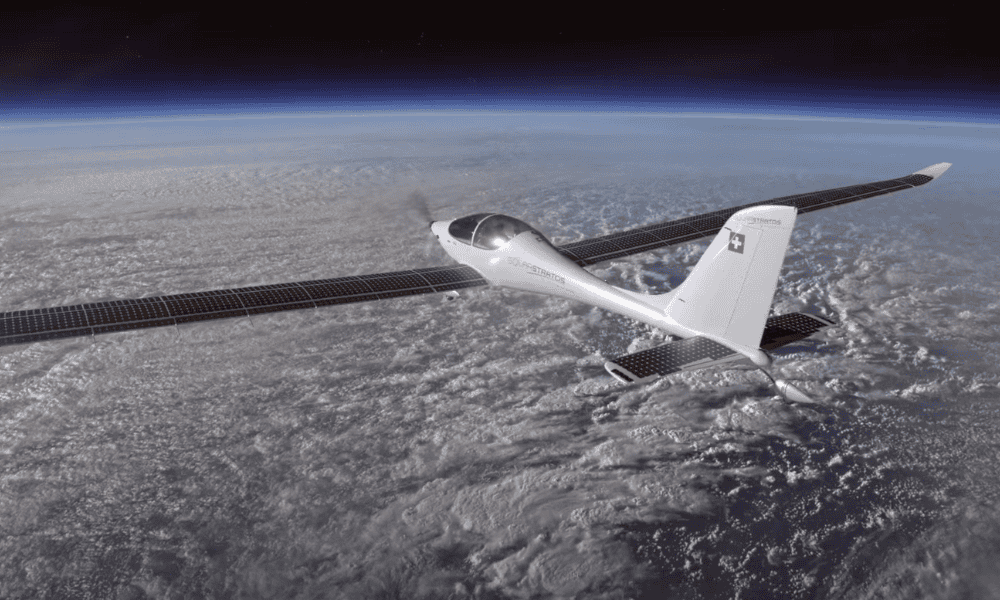
One of the world’s most innovative and sustainable energy companies, headquartered in California’s Silicon Valley, has joined the Mission SolarStratos expedition as the exclusive solar cell provider for its aircraft. Within the next two years, SolarStratos is expected to be the first solar-powered plane to soar above the Earth’s troposphere and into the stratosphere—flying twice as high as a commercial airliner’s typical cruising altitude—without a drop of fossil fuel.
“SolarStratos has an opportunity to push the limits of what we think is humanly possible and prove that renewable energy has the capacity to power our lives while preserving our planet,” said SolarStratos President and Pilot Raphael Domjan. “We are fortunate to energize SolarStratos with Maxeon’s industry-leading solar technology and look forward to further showcasing the value of innovative and reliable solar solutions for the world to see.”
A passionate, award-winning adventurer with experience bringing record-breaking projects to fruition, Domjan was the founder and expedition leader of PlanetSolar, also powered by Maxeon® solar technology, which became the first boat to sail around the world on solar energy alone in 2012. This September, Domjan will attempt his first world-record flight, reaching 33,000 feet in a SolarStratos prototype plane.
Maxeon® solar cells were selected for SolarStratos aircraft because they are highly efficient, durable, lightweight, and about as thin as human hair. On the next generation of the SolarStratos plane, Maxeon’s 24-percent efficient cells will be incorporated into the wings and horizontal stabilizer to power an electrical engine and charge a 20-kilowatt-hour (kWh) lithium-ion battery for energy supply when the sun is out of sight.
Next Generation SolarStratos Plane at a Glance
- Length: 8.5 meters, or about 30 feet, or the distance from the end zone to the 10-yard line on an American football field
- Wingspan: 24.8 meters, or about 81 feet, or the length of two standard city buses
- Weight: 450 kilograms—about as heavy as a grand piano; to make SolarStratos its lightest, the cabin will not be pressurized, requiring pilots to wear astronaut suits that are pressurized by solar energy
- Engine: 32-kilowatt electrical engine, about one-third the size of what would power an electric vehicle
- Energy: 22 square meters of SunPower Maxeon solar cells, each reaching 22 to 24 percent efficiency
- Batteries: One 20-kilowatt lithium-ion battery
- Autonomy: Self-generates electricity with solar to power the plane for more than 12 hours
“Soaring at such heights requires an unprecedented level of solar performance and durability, making SunPower’s unique solar technology a natural choice for SolarStratos,” said Tom Werner, CEO and chairman of the board. “The plane features the same extraordinary cells as those found in our high-efficiency solar panels powering homes and businesses here on land—a true testament to our innovation as a solar leader.”
In addition to supporting SolarStratos and the solar boat PlanetSolar, Maxeon has a pioneering legacy of powering unique solar projects. In 1993, Maxeon’s high-efficiency solar cells drove a Honda solar car to win the World Solar Challenge from Darwin to Adelaide in Australia, a full day ahead of the second-place finisher. The company also worked with NASA to develop the unmanned Helios solar plane, which flew to a record altitude of 96,863 feet. High-efficiency solar cells from Maxeon also provided power for it. Most recently, Maxeon helped Solar Impulse 2, a single-seater solar plane, complete its groundbreaking flight around the world with zero fuel, the first for an aircraft of its kind.
How much will solar cost you?
Find out. It’s FREE!

